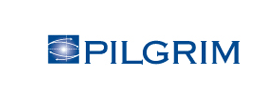 In the US, homes are typically financed with either a 15 or a 30 year mortgage. A mortgage allows homeowners to pay off their residence over a period of time, instead of having to pay potentially hundreds of thousands of dollars up front.
In the US, homes are typically financed with either a 15 or a 30 year mortgage. A mortgage allows homeowners to pay off their residence over a period of time, instead of having to pay potentially hundreds of thousands of dollars up front.
When purchasing a home, some people cannot afford to put down 20% of the purchase price. When that is the case, Private Mortgage Insurance (also known as PMI) is often taken out on the loan in order to protect against default. The amount you will pay monthly for PMI depends on three main factors:
- The total value of the home you are purchasing.
- The amount you are borrowing in your mortgage.
- Your credit score.
When everything is computed, PMI can add $100 or more to your monthly mortgage payment. While the protection provided by Private Mortgage Insurance is invaluable at the onset of your mortgage, you can typically eliminate the extra cost a little ways into the life of your loan. This is typically done one of four ways:
Pay off more than 20% of your mortgage
Private Mortgage Insurance is only necessary if you owe more than 80% of your home’s value. As you make payments (and therefore have paid off more and more of your home) you should naturally reach the point where you have paid off more than 20% of your mortgage. At this point, call your lender and verify that your PMI charge has been removed.
Reappraise your home
If you have spent money upgrading your home, or if you pay a high interest rate on your mortgage, you may benefit from having your home reappraised. If your appraiser determines that your home’s value has increased, it may push you over the 20% hurdle that is key when it comes to eliminating your Private Mortgage Insurance payment.
This method does not come without risk, though. You will have to pay for your home’s appraisal, and that will typically cost anywhere from $200 to $500 (or more, depending on the value of your home).
Lender Paid Mortgage Insurance
Some mortgage lenders will allow you to use an alternative to PMI. It is called “Lender Paid Mortgage Insurance,” and, as the name indicates, it is mortgage insurance that is covered by your mortgage provider instead of by you.
You may ask: what’s the catch? In the situation that you opt for Lender Paid Mortgage Insurance, your lender will require you to pay a higher rate of interest on your mortgage for the life of the loan. While this can sometimes result in a higher tax deduction, it is normally impossible to cancel. Typically, this route is only recommended if you have a short term loan, or if you plan to move or refinance within 10 years.
It is also important to remember that Private Mortgage Insurance only protects you from default on your mortgage. This policy is completely separate from your home insurance policy, which protects your home from many types of perils.
Typically, mortgage lenders will require that you purchase a home insurance policy as a part of their financing agreement. If you don’t know where to start, talk to a representative from Vargas and Vargas Insurance. You can get on the road to peak home protection, just by calling us at 877-550-0025.












